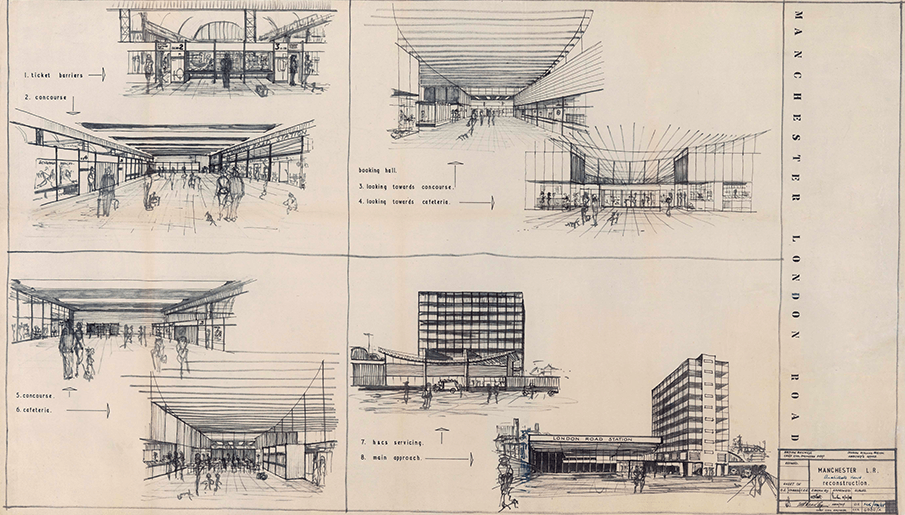The history of Manchester Piccadilly station
Manchester was already at the heart of industrial revolution when the railway came to the city in 1830.
The potential to link the city with other industrial towns and cities has made Manchester an important centre for railway investment.

The original station
The original temporary terminus on Travis Street was opened in June 1840. It was opened by the Manchester & Birmingham Railway when its line ran as far as Stockport. In 1842 when the line was opened as far as Crewe, the Company extended its station to London Road.
The station had two platforms, one for arrivals, the other for departures. It also housed the Manchester & Birmingham Railway’s offices in the station buildings. An agreement with the Sheffield, Ashton-under-Lynne & Manchester Railway enabled that railway company to use the London Road premises for the terminus of their line to Sheffield.
London Road expanded
By the 1860s the original station at London Road was becoming overcrowded. Relationships between the London North Western and the Manchester Sheffield and Lincolnshire (as the SA&MR had become) was at an all time low. An agreement was reached in 1862 by the two companies to build a new station designed to be split in two. The LNWR occupied the south western side and the MS&L the north eastern side.
To cope with increased traffic, London Road Station was expanded in 1881. This included an additional two spans added to the train shed roof.
The Manchester, South Junction and Altrincham Railway opened in August 1849 and built platforms for its services next to London Road. During the station enlargement in 1881 the ‘South Junction’ platforms were taken out. An island platform on a bridge over Fairfield Street was erected, opening in May 1882. This island platform forms today’s platforms 13 and 14 for services running through Manchester.
Twentieth century improvements
After railway nationalisation in 1948, Manchester London Road was operated by the London Midland Region of British Railways (LMR) and the London Eastern Region of British Railways (LER). They continued to operate Manchester London Road as two separate stations.
On 12 September 1960, Manchester London Road changed its name to Manchester Piccadilly. This followed major redevelopment undertaken by British Railways in the late 1950s. Station and office accommodation which served the railway companies from the 1860s were demolished. And a new concourse with office accommodation was constructed in glass and steel.
Accommodation underneath Manchester Piccadilly had been used as a goods warehouse since the nineteenth century. In 1992, the vaults opened as a station for the city’s MetroLink service.
Between 1998 and 2002 Manchester Piccadilly was extensively modernised ready for the Commonwealth Games hosted by the city in 2002. The project greatly enhanced the facilities, layout and accessibility, as well as the visual appearance of the station. New areas for shopping were established and new glass entrances to the terminus platforms were added. As well as a moving walkway to take passengers over to platforms 13 and 14.
Did you know?
By the 1880s the goods warehouses underneath Manchester London Road were some of the busiest in the world. This vaulted undercroft is now the Manchester Piccadilly metrolink station.